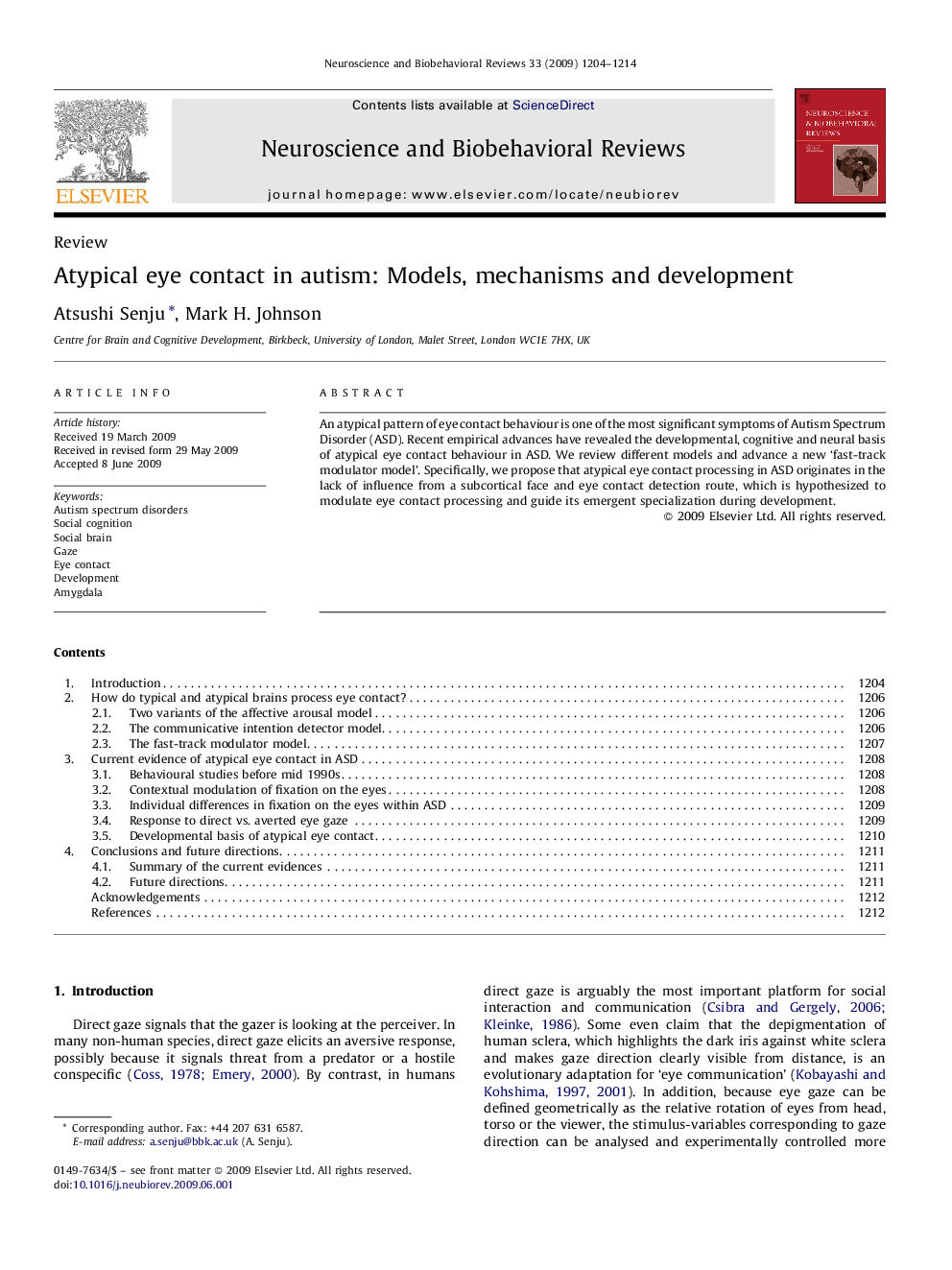| Article ID | Journal | Published Year | Pages | File Type |
|---|---|---|---|---|
| 937765 | Neuroscience & Biobehavioral Reviews | 2009 | 11 Pages |
Abstract
An atypical pattern of eye contact behaviour is one of the most significant symptoms of Autism Spectrum Disorder (ASD). Recent empirical advances have revealed the developmental, cognitive and neural basis of atypical eye contact behaviour in ASD. We review different models and advance a new ‘fast-track modulator model’. Specifically, we propose that atypical eye contact processing in ASD originates in the lack of influence from a subcortical face and eye contact detection route, which is hypothesized to modulate eye contact processing and guide its emergent specialization during development.
Related Topics
Life Sciences
Neuroscience
Behavioral Neuroscience
Authors
Atsushi Senju, Mark H. Johnson,
